The Complete Guide for Data Warehouse Migrations
Data warehouse migration is the process of transferring data from one or more source systems to a new or upgraded data warehouse environment. This could involve upgrading to a newer version of the same platform, switching to a different database technology, or moving from on-premises to cloud-based solutions. Successful migration can lead to enhanced data-driven decision-making, improved performance, and significant cost savings.
Common reasons for migration include:
- Scalability: As data volumes grow, organizations need more robust solutions to handle increased workloads
- Performance: Newer technologies often offer better query performance and data processing capabilities
- Cost-efficiency: Cloud-based solutions can provide significant cost savings compared to maintaining on-premises infrastructure
- Compliance and security: New data protection regulations and security standards may necessitate a migration to ensure compliance and protect sensitive data
- Advanced features: Modern data warehouse platforms offer enhanced analytics capabilities, machine learning integration, and improved security features
Selecting the Appropriate Migration Strategy
When it comes to data warehouse migration, there are two main approaches to consider:
1. Big bang vs. phased approach
The big bang approach involves migrating the entire data warehouse in a single-phase operation. It can be faster and less costly in the short term but carries higher risks due to potential disruptions and limited rollback options. It requires thorough planning and testing beforehand to ensure a smooth transition.
A phased approach, on the other hand, involves migrating the data warehouse in multiple stages. This method is often less risky but can take longer to complete. It allows for testing and validation at each stage, making it easier to identify and resolve issues at earlier stages of the migration.
2. Lift-and-shift vs. re-architecture
Lift-and-shift involves moving the existing data warehouse to the new environment with minimal changes to the existing data model. This approach is faster and less complex, but may not take the full advantage of the new platform’s capabilities.
Re-architecture involves redesigning the data warehouse to optimize it for the new environment. This approach can be more time-consuming and complex but often results in better performance and utilization of new features.
For example, an organization decided to migrate its on-premises data warehouse to a cloud-based solution. They might choose a phased approach with re-architecture to gradually move their sales, inventory, and customer data while optimizing their data model for cloud-based analytics. Such approach will enable the organization to validate every stage of the migration, limit disruptions to business operations, as well as update existing data models to make them more performant in the new cloud environment.
3. Hybrid migration strategy
An organization can also consider following a hybrid migration strategy: doing a lift-and-shift first and re-architecting the data model later, in the new environment. This two-phased method can offer several advantages but also comes with potential drawbacks. It allows for faster switch over while maintaining familiar workflows and processes initially. It also provides organizations with the opportunity to gain experience with the new warehouse before committing to a full re-architecture. However, this approach may lead to temporary inefficiencies and require double effort. During the period between lift-and-shift and rearchitecting, the new data warehouse may not fully leverage the capabilities of the new platform, potentially leading to suboptimal performance and higher costs.
This hybrid strategy can be a pragmatic solution for companies needing to quickly move from their current infrastructure or those wanting to gain experience with the new platform before a full re-architecture. However, it requires careful planning to ensure that the benefits outweigh the potential inefficiencies and additional effort. On the other hand, this approach may not be ideal for organizations where the current data warehouse has significant performance or scalability issues that need immediate addressing, or where organizations have the resources and expertise to perform a direct re-architecture and migration.
The success of this approach hinges on careful planning and a clear strategy for the subsequent re-architecting phase to ensure that the benefits outweigh the potential inefficiencies and additional effort involved.
Stages of a Data Warehouse Migration
The migration process typically involves several key stages:
- Assessment: Evaluating the current data warehouse environment to understand its architecture, data models, and usage patterns
- Planning: Developing a detailed migration strategy that aligns with business objectives and minimizes disruption
- Execution: Implementing the migration plan, which may involve data extraction, transformation, and loading (ETL), as well as system configuration and testing.
- Validation: Ensuring data integrity and performance in the new environment through rigorous testing and validation
- Post-migration maintenance: Fine-tuning the new data warehouse to maximize performance and efficiency, implementing performance monitoring and documenting new environments and processes
Let’s now review each migration’s stage in more detail.
Stage 1: Assessing the Current Data Warehouse Environment
Before beginning the migration, it’s crucial to thoroughly assess the current data warehouse environment. It enables the organization to understand the scale and the effort required for the migration project, and usually involves the following:
a. Analyze existing architecture and infrastructure
A thorough assessment of the current data warehouse environment is essential for a successful migration. Key areas to analyze include:
- Database systems and versions: Identify the current database systems and their versions, as well as any legacy systems that may require special handling. This information is crucial for determining compatibility with the target environment.
- ETL processes and tools: Document the existing ETL processes and the tools used to perform these operations. This includes understanding the frequency of data loads, data volumes, and any complex transformations. This step can also be an opportunity to identify inefficiencies and potential improvements.
- Existing data models: Analyze existing data models to understand how data is structured and used. This will help to determine if they need to be optimized or redesigned for the new environment. With Select Star’s auto-generated ERD (Entity-Relationship Diagram) feature, data teams can quickly visualize current tables and views, understand their relationships, and see primary and foreign keys.
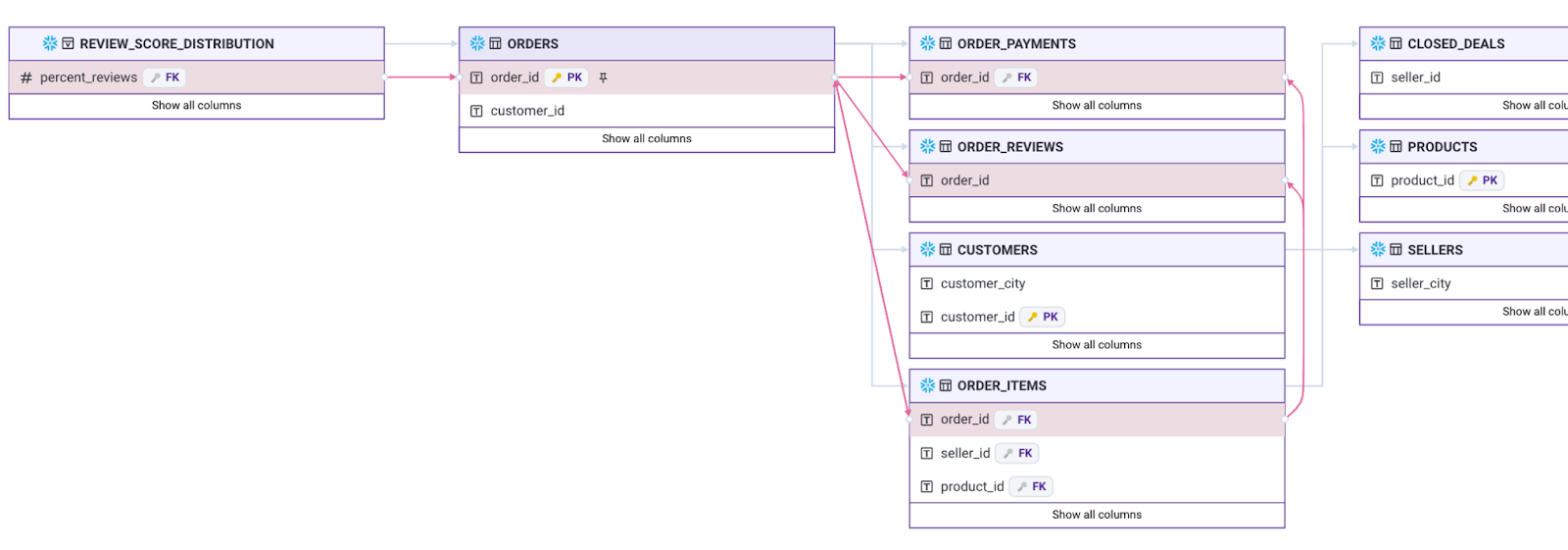
b. Evaluate usage patterns for existing tables & views
Understand how different tables and views are being used in the current environment. This includes identifying frequently accessed data, heavy queries, and any performance bottlenecks. This information will help prioritize migration efforts and optimize the new environment. To accelerate this step, Select Star enables you to see usage metrics for each asset (database, table, dashboard, etc.) through the Popularity Score. You can filter this view to see only the objects with a certain level of popularity, or without the popularity score (i.e., no recently recorded usage).
You can also use one of the filtering options on the right side to quickly identify objects that have no upstream or downstream dependencies. This can help you to create a list of tables or views that are not critical for the organization and potentially should be considered for deprecation.

You can also understand what questions your users are asking most frequently by exploring the Queries & Joins tab for each table in your data warehouse.
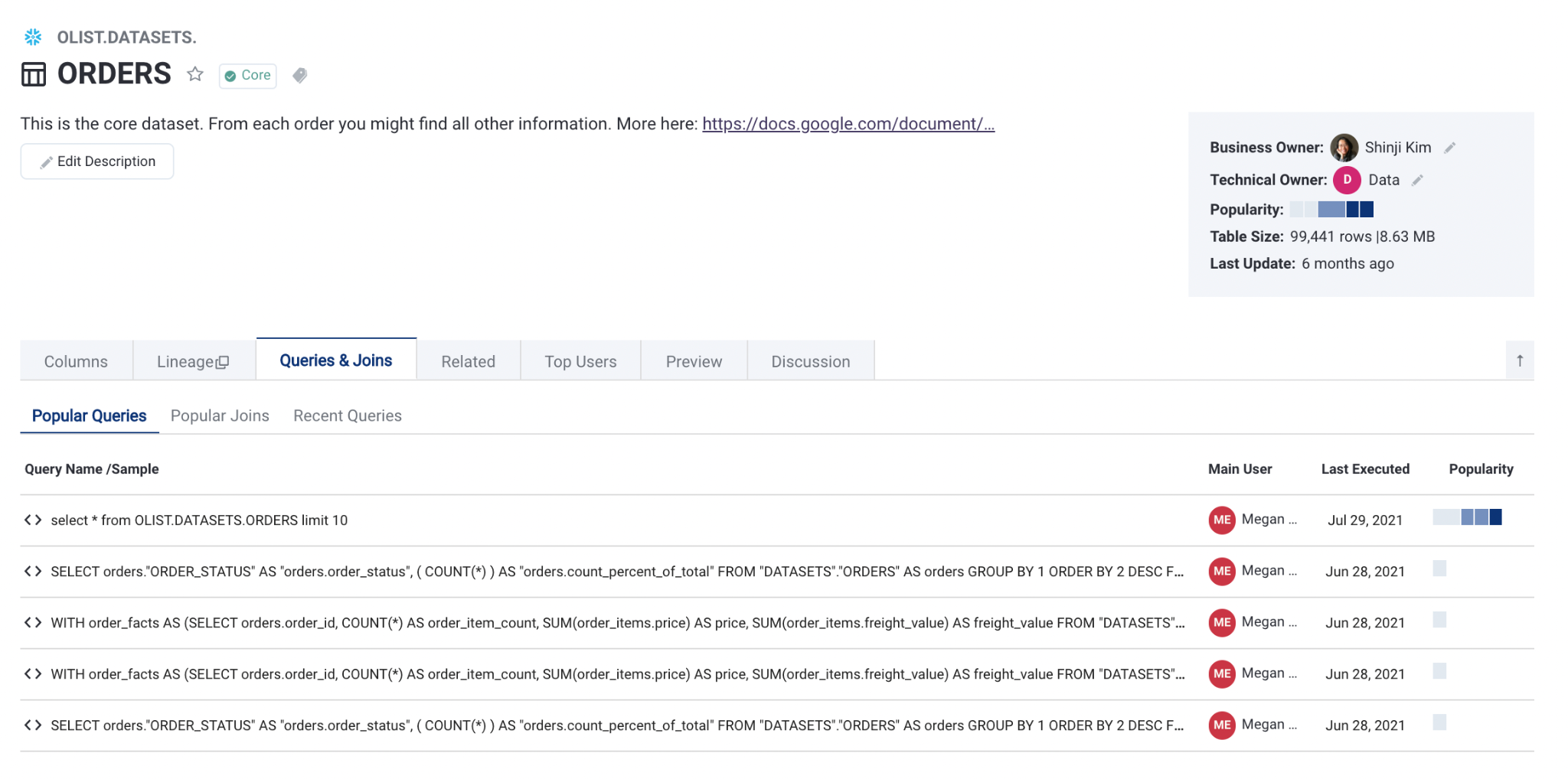
c. Document data lineage and dependencies
Map out the flow of data from source systems to the data warehouse and any downstream systems. This includes understanding data transformations, business rules, and interdependencies between different data assets. When using Select Star platform, you can see not only the lineage between individual tables and views in your warehouse, but also explore how these assets are used in BI and ETL tools across the organization, at individual column level.
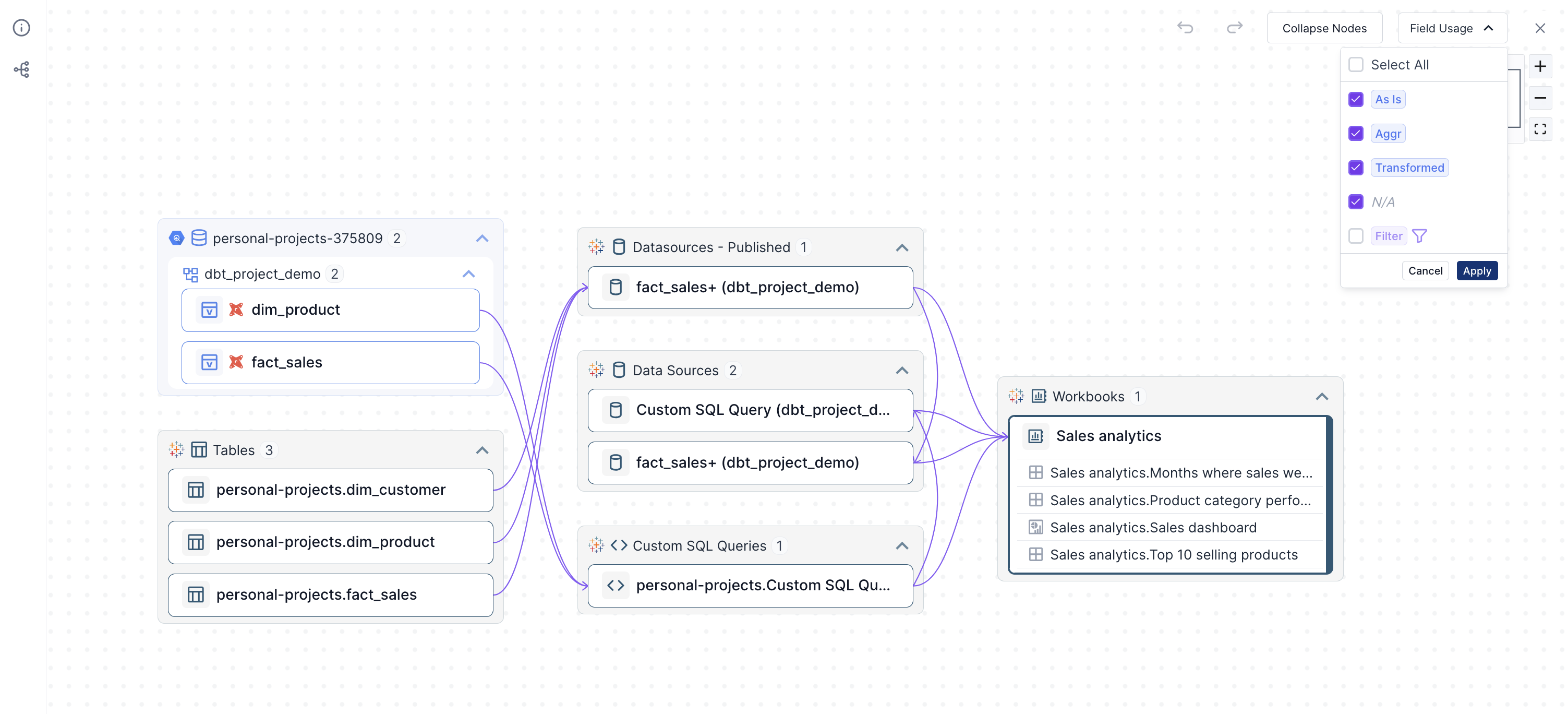
Stage 2: Identifying Assets for Migration
When preparing for a data warehouse migration, it’s crucial to identify and evaluate all existing data assets. This process ensures that nothing critical is overlooked and that the migration is comprehensive and efficient.
a. Evaluate existing data assets
- Tables and views: Begin by cataloging all tables and views in the current data warehouse, including their schemas, indexes, and constraints. Assess their size, usage frequency, and role in business operations. This evaluation helps determine which tables and views are essential and which may be redundant or obsolete. In Select Star, each table in your warehouse has its own page with details about its location, size, business owner, popularity, date of last update and in some cases even details of the SQL query that was used to create it.
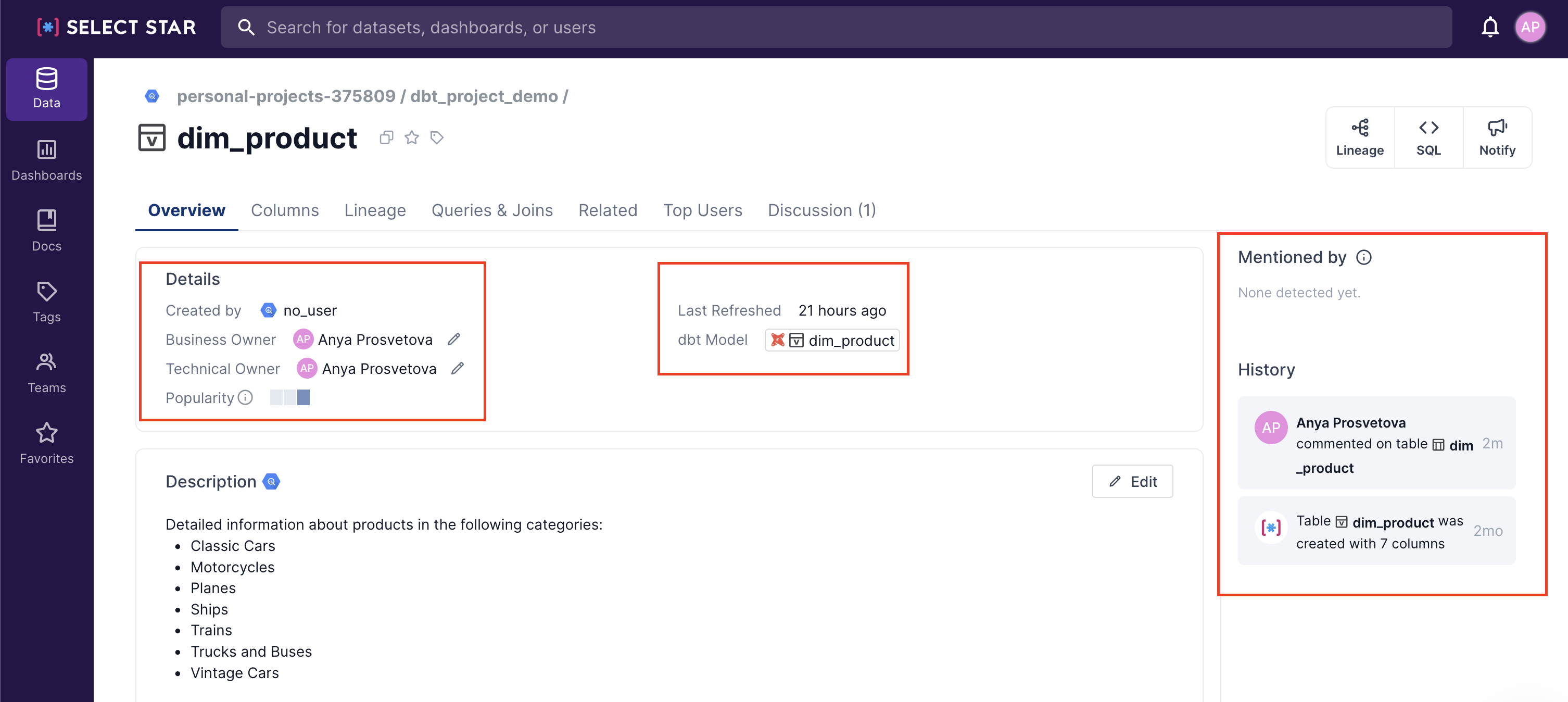
- Stored procedures and functions: Document all stored procedures and user-defined functions, including their purpose and frequency of use. Understand their dependencies and how they interact with other data assets. This step is crucial for ensuring that business logic is preserved in the new environment.
- ETL jobs and workflows: Examine existing ETL jobs and workflows, focusing on their complexity, frequency, and performance. Identify any inefficiencies or bottlenecks that could be addressed during the migration. This evaluation helps in deciding whether to migrate, modify, or replace existing ETL processes.
Here is an example of a migration assessment document that outlines the criticality of an asset, any upstream or downstream dependencies, and whether it should be migrated to the new environment.
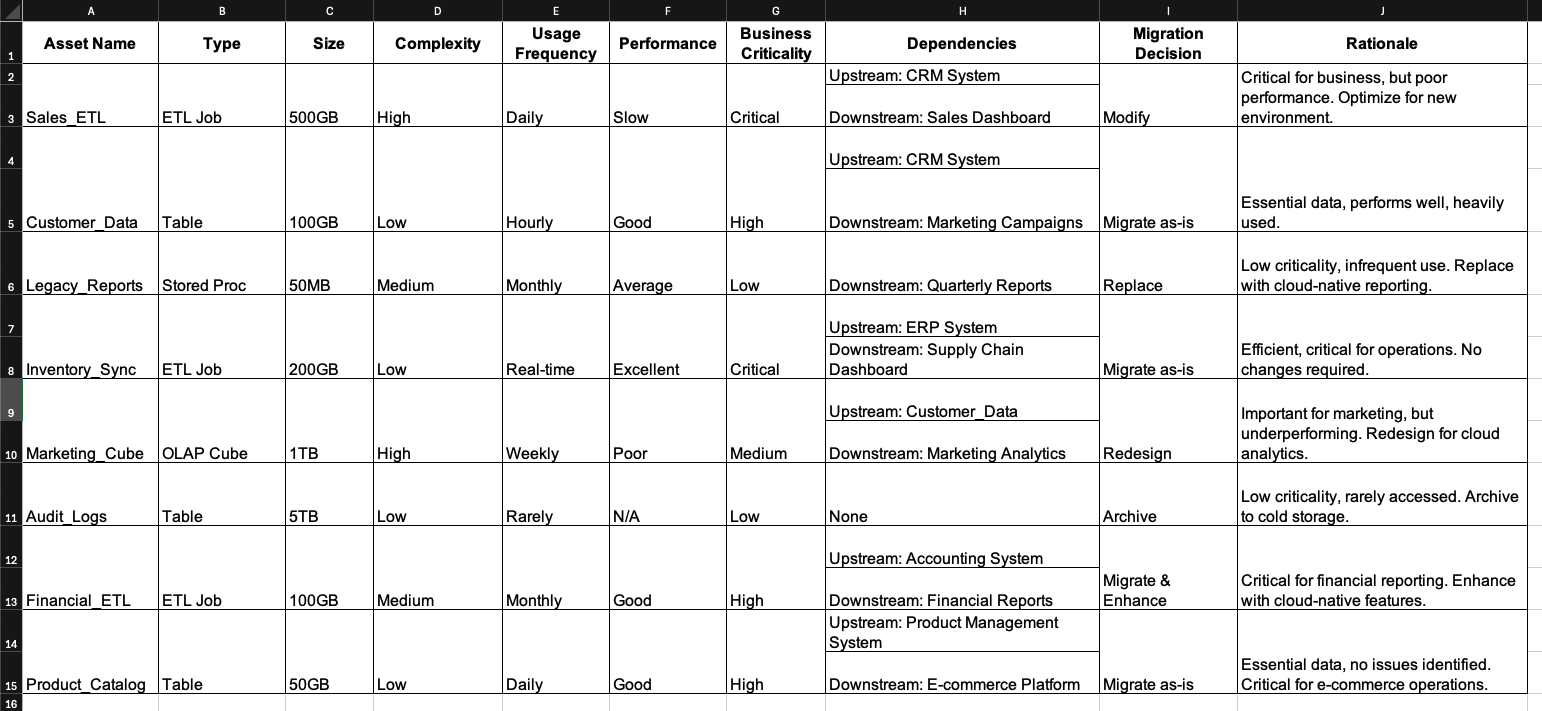
b. Prioritize assets based on business criticality and complexity
Not all data assets are equally important or complex to migrate. You can prioritize them based on:
- Business importance: Focus on data assets that support critical business operations or decision-making processes
- Complexity: Consider the effort required to migrate each asset, including any necessary redesign or optimization
- Dependencies: Prioritize assets that other systems or processes depend on (e.g., critical BI reports or data transformation workflows). For example, from a dedicated Tableau workbook page on Select Star platform, you can see all upstream data sources and tables that are used in this workbook, as well as understand their popularity across your organization.
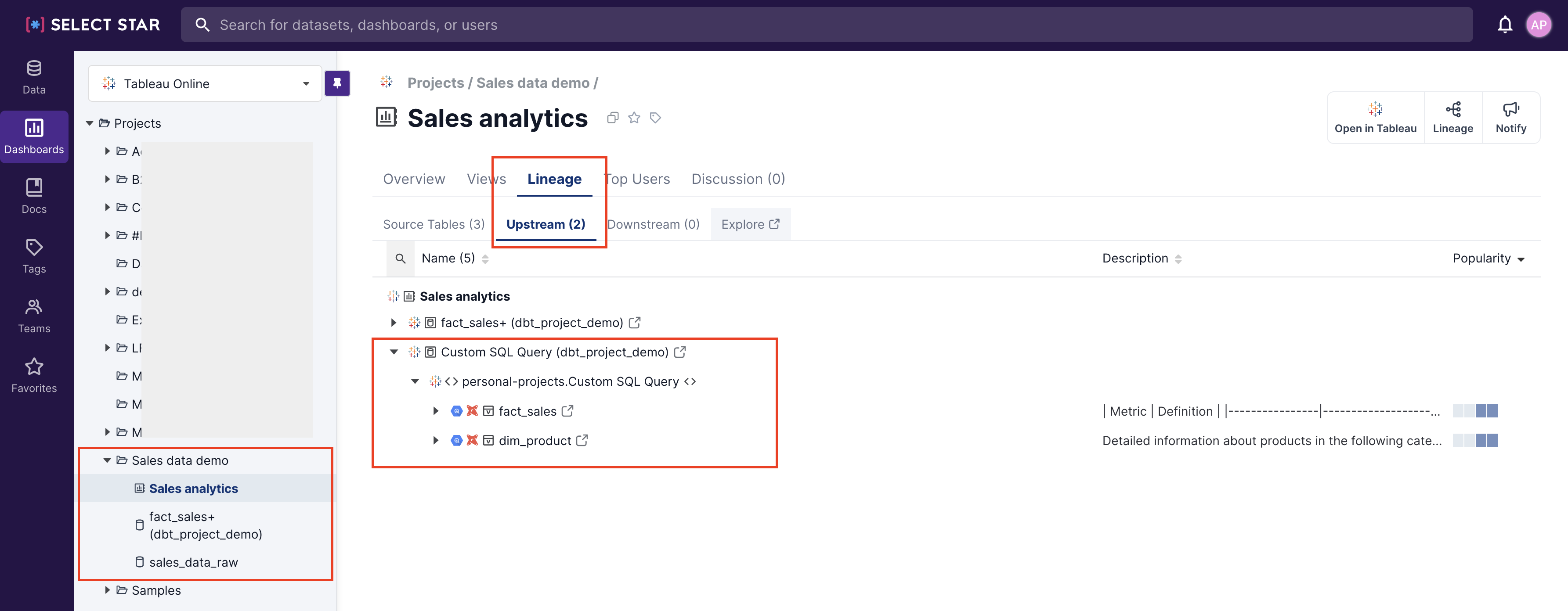
This prioritization helps in allocating resources effectively and minimizing business disruption during migration.
c. Outline the migration order for data assets
After prioritizing the assets, outline the order in which they will be migrated. Typically, it’s advisable to start with less critical and less complex assets to test the migration process and tools. This approach allows for adjustments before tackling more critical assets.
The migration order should also consider dependencies between assets, ensuring that dependent assets are migrated in a sequence that maintains data integrity and functionality. For example, dimension tables should be migrated before fact tables, and core business data before historical or archival data.
Stage 3: Technical Execution of the Migration
This stage is where you start transforming carefully laid migration plans into tangible results. It involves a series of coordinated steps related to each data asset types, all while ensuring minimal disruption to ongoing business operations.
a. Data sources
Test and confirm that all required data sources can connect to the new environment. This may involve updating connection strings, configuring network access, or setting up new data ingestion pipelines.
b. Data schema
Migrate the data schema to the new environment, including:
- Recreating the existing schema in the new environment, including tables, views, indexes, and constraints
- Adjusting data types to match the new platform’s specifications
- Optimizing indexes and partitioning strategies for improved performance in the new system, if needed
c. ETL processes
Migrate or recreate ETL processes in the new environment, including:
- Updating ETL jobs to work with the new data model
- Testing ETL processes to ensure they perform efficiently and accurately in the new environment
- Optimizing data transformations for the new platform
- Reconfiguring job schedules and dependencies, if needed
d. Connections for BI layers
Finally, update connections in BI tools and reporting systems to point to the new data warehouse. This may require:
- Reconfiguring BI tools to connect to the new data warehouse
- Modifying queries in BI tools to work with the new schema
- Validating that all reports, dashboards, and analytics functions operate correctly with the migrated data
- Testing performance of BI platforms to ensure that it meets or exceeds previous levels
Stage 4: Testing and Validation Procedures
Thorough testing and validation are crucial steps in ensuring a successful data warehouse migration. These procedures help identify and resolve issues before they impact business operations, ensuring data integrity and system functionality in the new environment.
a. Unit testing of migrated components
Unit testing focuses on individual components of the migrated system:
- Schema validation: Ensure that all tables, views, and other schema objects have been correctly migrated and maintain their integrity
- ETL job functionality: Verify that each ETL job runs successfully in the new environment and produces the expected output. This involves validating data transformations, checking for data loss or corruption, and verifying that the jobs complete within acceptable time frames
- Data integrity checks: Perform checks to ensure data accuracy and completeness after migration. This includes verifying record counts, checking for duplicate entries, and validating key relationships between tables
b. Integration testing
Integration testing examines how different components of the migrated system work together:
- End-to-end process validation: Test the entire data flow from source systems to the data warehouse and through to reporting and analytics layers. This ensures that all components integrate correctly, and that business processes remain functional.
- Performance benchmarking: Compare query performance and data load times in the new environment against the old one. This includes measuring query response times, ETL job durations, and overall system throughput under various load conditions.
c. User acceptance testing (UAT)
Involve business users in testing to ensure that the migrated data warehouse meets their requirements and expectations. Here are some activities that should be considered during the UAT process:
- Engage key stakeholders and power users to thoroughly test critical business processes and reports. Their hands-on experience is invaluable in identifying any discrepancies or issues that may have been overlooked.
- Validate that all essential functionality is not only available, but also performs as expected in the new environment. This includes checking query performance, report generation times, and data accessibility.
- Verify data freshness and accuracy across the system. Users should confirm that real-time data updates are reflected correctly, and that historical data remains intact and accessible.
- Ensure all necessary historical data is available and properly migrated. This is crucial for maintaining business continuity and supporting long-term trend analysis.
- Gather any feedback on the user experience to identify areas that may require further adjustment or optimization.
d. Data reconciliation and validation
This final step ensures that all data has been correctly migrated. Perform thorough comparisons between the old and new environments to ensure data integrity. This might include row count comparisons, checksum validations, sampling and manual verification of critical data points, as well as verification of calculated fields across a representative sample of data.
Stage 5: Post-migration Maintenance
After successfully migrating the data warehouse, ongoing maintenance is essential to ensure its continued performance and reliability.
a. Implement monitoring and alerting systems
Set up monitoring tools to track the health and performance of the new data warehouse, and to proactively identify and address any issues. This should include:
- Monitor system performance metrics such as query response times, concurrency levels, cache hit rates, credit consumption, and storage utilization
- Implement alerts for critical events like failed ETL jobs, data quality issues, or system resource constraints
- Regularly review monitoring data to identify trends and potential areas for optimization
b. Document the new environment and processes
Create comprehensive documentation for the new data warehouse environment, including:
- Detailed documentation of the new system architecture, including data lineage, ETL processes, and dependencies
- Any changes in data structures, business logic, or reporting processes resulting from the migration
- Up-to-date user guides and training materials
- Operational procedures for maintenance and troubleshooting
Communication Around Data Warehouse Migration
Effective communication is crucial before, during, and after the data warehouse migration process. It’s essential to establish clear channels of communication between all stakeholders, including engineering teams, IT teams, business users, project managers, and leadership. Regular updates should be provided on the migration’s progress, potential challenges, and any changes to the timeline or scope. This helps manage expectations and allows for timely decision-making.
A migration communication plan should outline how and when information will be shared, and who is responsible for different aspects of communication. This plan should include methods for gathering feedback, as well as steps for addressing concerns and questions from end-users during and after the migration.
You can use Select Star’s Discussion section to encourage stakeholders to reach out with questions or concerns throughout the migration process. This lets you keep the conversation immediately next to a specific table or dashboard, and reference it in the future. You can also directly notify business and technical users about the upcoming change due to the planned migration, and how they may need to use a different target environment instead.
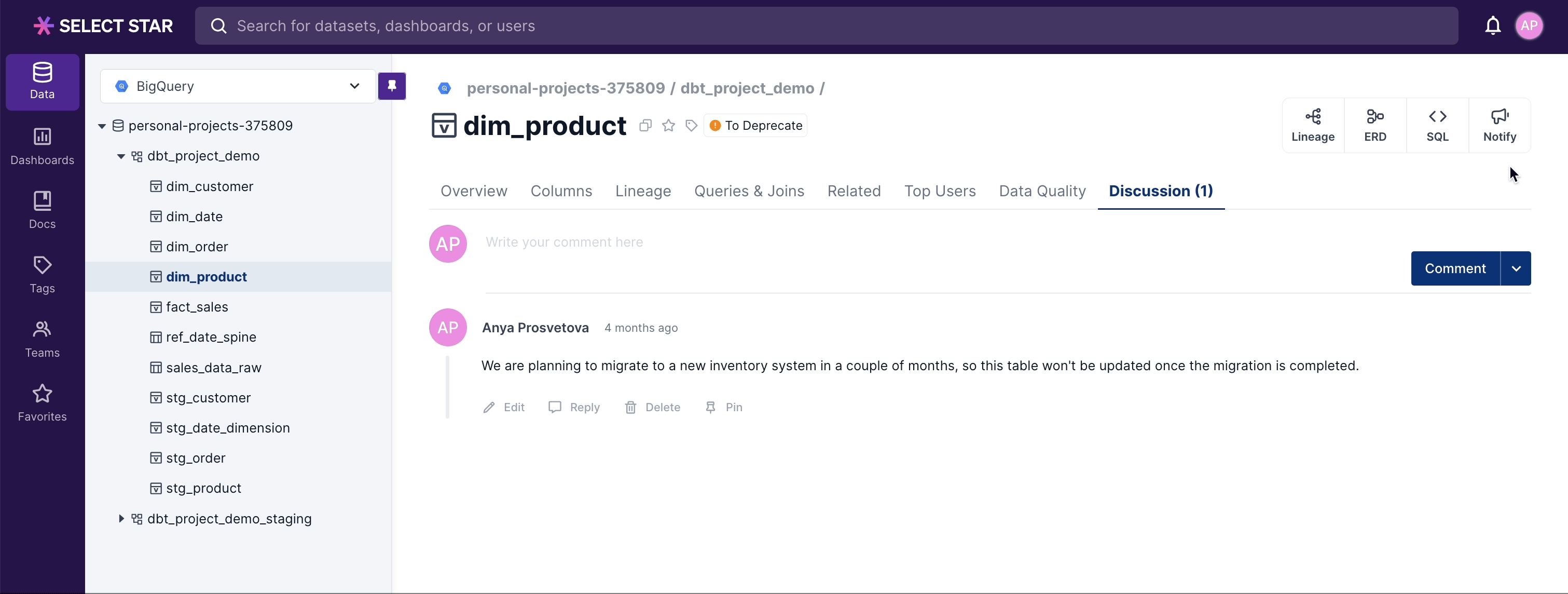
Conclusion
Data warehouse migration is a complex but essential process for organizations looking to modernize their data infrastructure. By following a structured approach that includes thorough assessment, careful planning, meticulous execution, and rigorous testing, organizations can ensure a successful migration.
A well-planned and executed migration can lead to significant benefits, including improved performance, scalability, and reduced costs. It can also open up new possibilities for advanced analytics and data-driven decision-making. The success of a data warehouse migration depends not only on technical expertise but also on effective communication and collaboration between IT teams, business users, and other stakeholders throughout the process. By keeping these principles in mind, organizations can navigate the challenges of data warehouse migration and emerge with a more robust, efficient, and future-ready data infrastructure.
The article was originally published on Select Star’s blog.